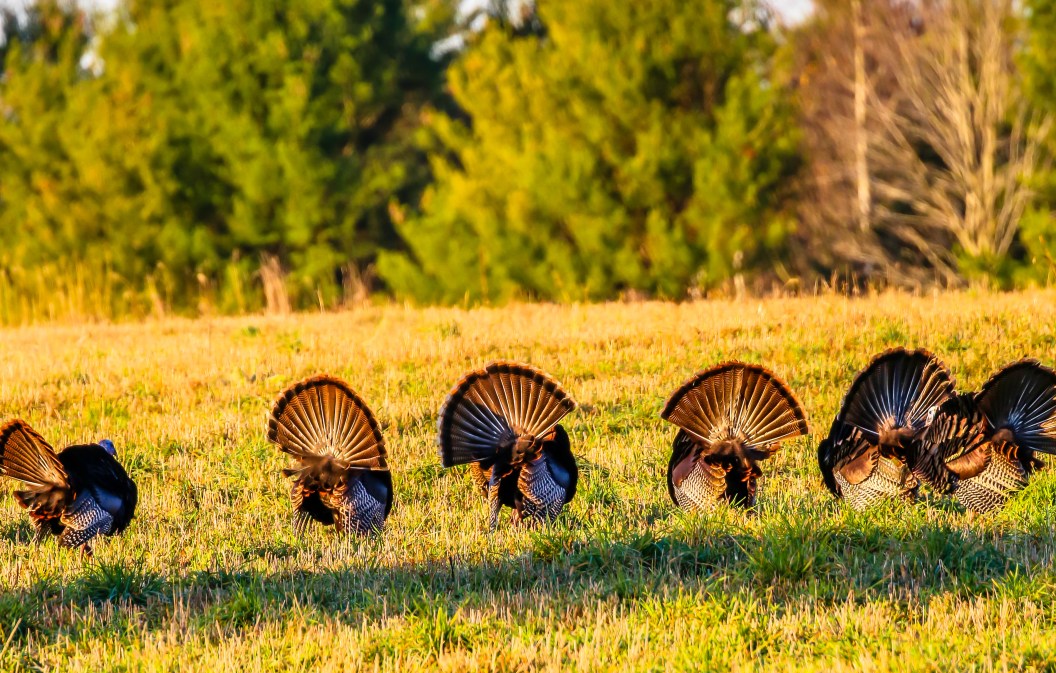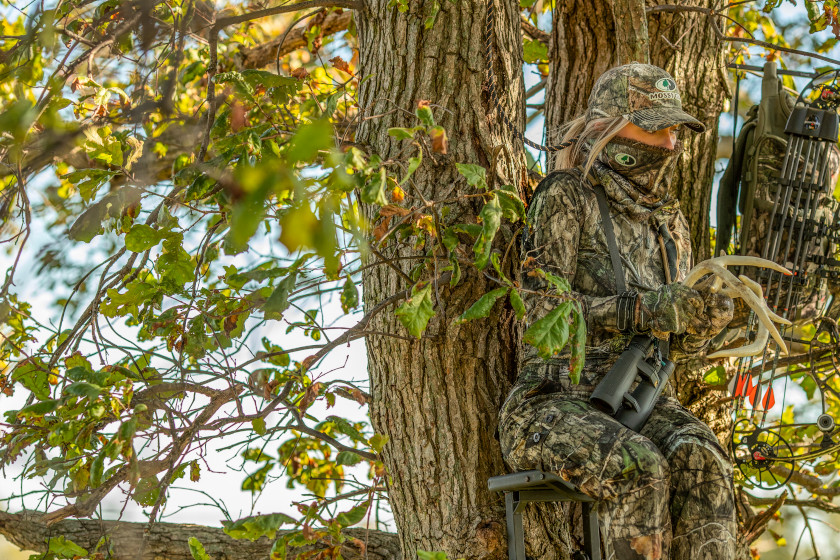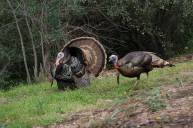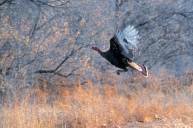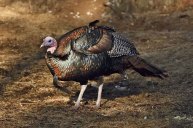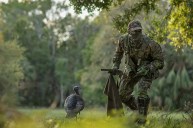Hunting wild turkeys is a past-time like no other, and while spring turkey hunting gets all the hype and attention, you can find great success going after a gobbler in the fall.
In the autumn months, turkeys tend to travel around in large flocks instead of individual birds. That's good news for you, as more birds increases your chance to fill a tag. Also, in most states, a fall turkey tag can be punched on either a hen or a Tom; either sex is fair game. Plus, at this point in the year, the tall grasses and leafy vegetation has started to subside, giving fall turkey hunters a better view, and perhaps a better chance, of spotting and harvesting a turkey.
You already have your hunting gear cleaned off and your local camo dialed in (don't forget: turkeys have amazing eyesight), but if you're new to taking shots in the autumn, there are some crucial seasonal differences you need to be aware of to find success at the end of the year.
For starters, spring is turkey mating season. That's when these birds will be all about calling, gobbling, and strutting—basically, trying to appear as attractive to a potential mate as possible. But in the fall, turkeys are not in mating season. Therefore, the behavior of both toms and hens is different than their prime time of spring.
During fall turkey hunting, the birds aren't quite as willing to investigate calling, and locating turkeys won't be as easy as just sounding off a few clucks and waiting for a gobble.
1. Locate Food
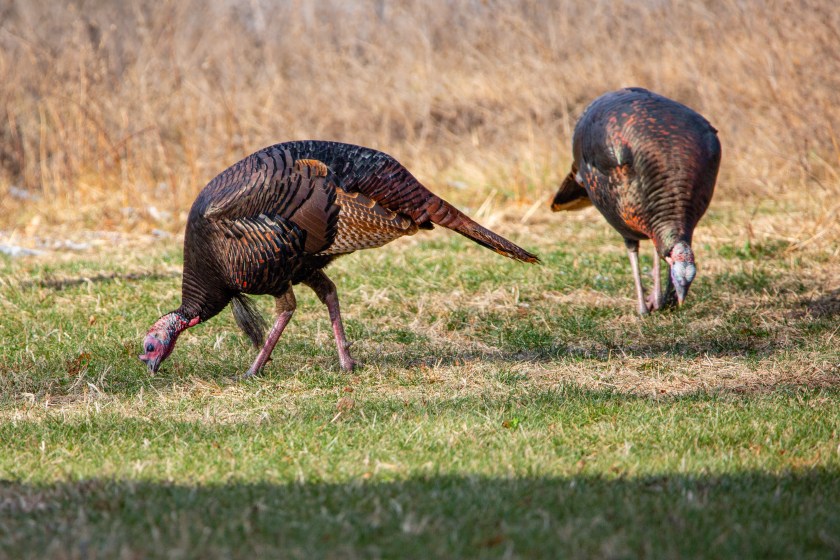
Getty Images, Michael-Tatman
When you can't entice a turkey through the power of love, the next best way is through their stomachs. During the fall, a turkey's sole focus is on food as they prepare for the scarcity of winter. Places like harvested agriculture fields, food plots, and oak ridges are all key areas to put your focus on for fall hunting. Think of the places where you have noticed turkeys scratching for food. If there is a sustaining food source, they will come back.
2. Scout Heavy
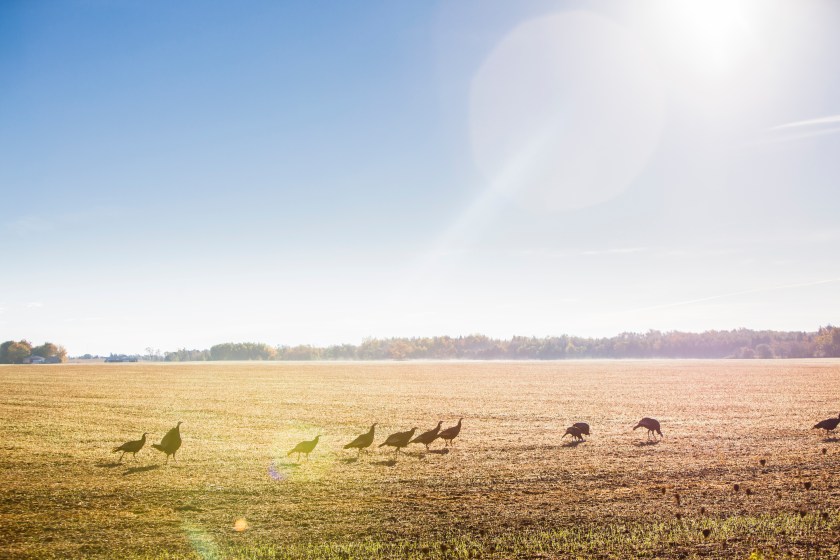
Getty Images, seb29
If you thought scouting during the spring season was crucial for turkey hunting success, be prepared to step it up for fall hunting. It is the best way to find a perfect setup for a fall hunt, as it will be much harder to locate a vocal turkey during the hunt. Thankfully, turkeys tend to leave large amounts of signs around to let you know that a spot is prime for hunting.
When checking fields and oak patches, search for signs of turkey scat, tracks, feathers, and scratch marks in the ground (places where they're searching around for bugs and other edibles). Turkeys tend to have a very consistent routine during the fall, so if you locate where a turkey has been, you can almost certainly count on them visiting again.
3. Utilize Decoys

Decoys aren't just meant for spring turkey hunting. During the fall, turkeys tend to congregate in large flocks, and for the most part, are always searching for more birds to join. A large decoy spread can encourage lone birds to join the group, allowing you to get a shot at a curious and lonely bird.
4. Learn Fall Calls
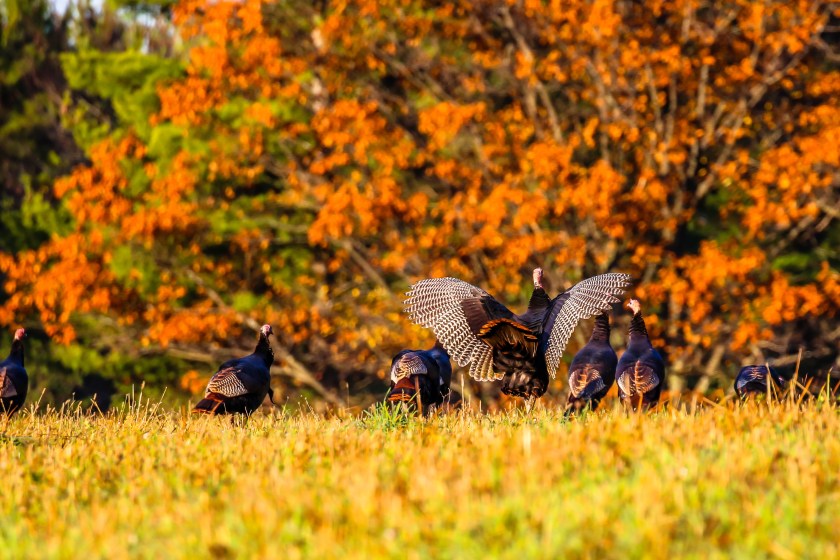
Getty Images, Michael-Tatman
There is a common thought that turkeys don't call during the fall. This leans towards being true, but not in its entirety. While it's unlikely that you'll hear the woods light up from the sound of thunderous gobbles, the fact remains that turkeys call every day of the year. Use this to your advantage by imitating a lone turkey searching for a group.
One of the most popular turkey calls in fall is what's known as the kee-kee call, meant to imitate a young bird in distress because they're lost and searching for a group of birds to join. Mastering this call will be vital to upping your success in luring birds to your set up.
5. Flock Bust
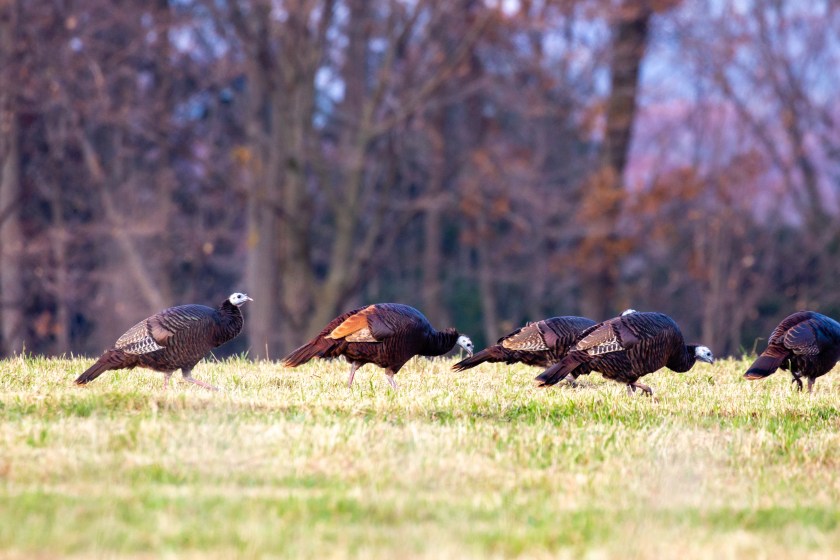
Getty Images, Michael-Tatman
Flock-busting is a common strategy used by fall turkey hunting enthusiasts, but it comes with a great deal of risk. The general idea is to locate a large flock of turkeys grazing out in a field, and run out into the field as fast as you can in hopes of surprising the flock. One of the keys is to make as much commotion as possible to hopefully scatter the flock in several different directions, creating some confusion amongst the flock and a scattering of fleeing birds.
After you have scared the flock and they have vanished in multiple directions, set up exactly where the birds were. Wait about 10 minutes or so, and then perform some kee-kee runs, as well as some soft clucks and purrs. The goal of this is to convince a scattered and lone turkey to rejoin the spooked flock, and that the coast is clear. This will likely only produce one bird, so be ready for a quick shot.
6. Buy Two Tags and Double Your Efforts
My old man used to always jokingly say, "When you're deer hunting, you see lots of turkeys. When you're turkey hunting, you see lots of deer." This was clearly a shot at his own luck, but a very accurate way to tease himself and any other hopeful hunters.
It seems as though whenever my focus is on harvesting a deer, I can't help but see a flock of giant longbeards at 20 yards.
Shamefully, this took me a while to figure out. But now, whenever I am in the treestand in late October or early November, looking for a cruising whitetail, I always have a turkey tag in my pack just in case one decides to show its face. Fall turkeys don't see much hunting pressure, and bird numbers are at an annual high during the fall, so the odds of you spotting a flock of turkeys from your deer stand are pretty likely.
READ MORE: 8 of the Best Turkey Hunting Shotguns on the Market Right Now
